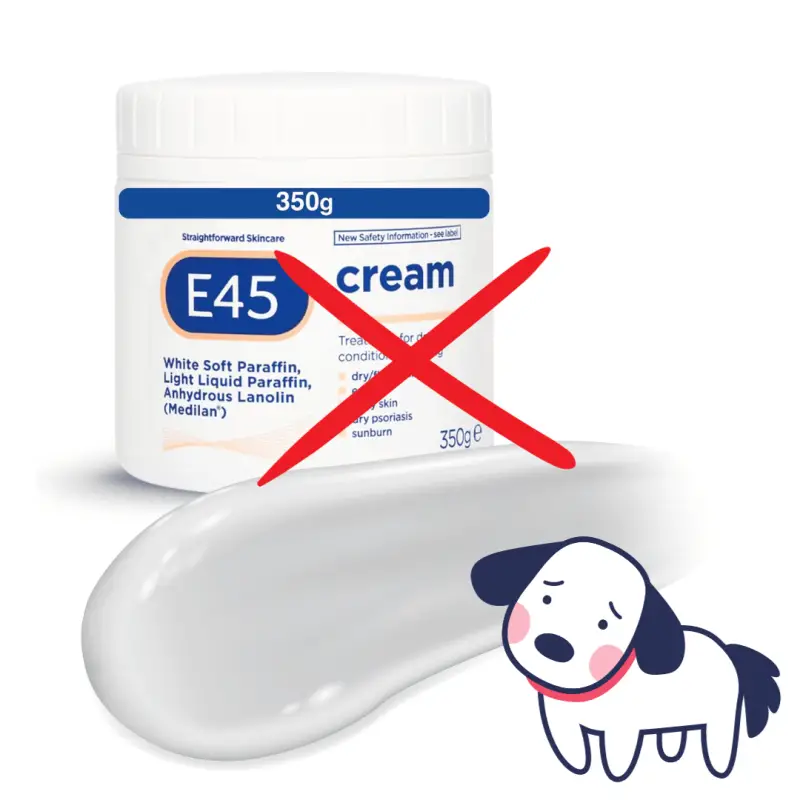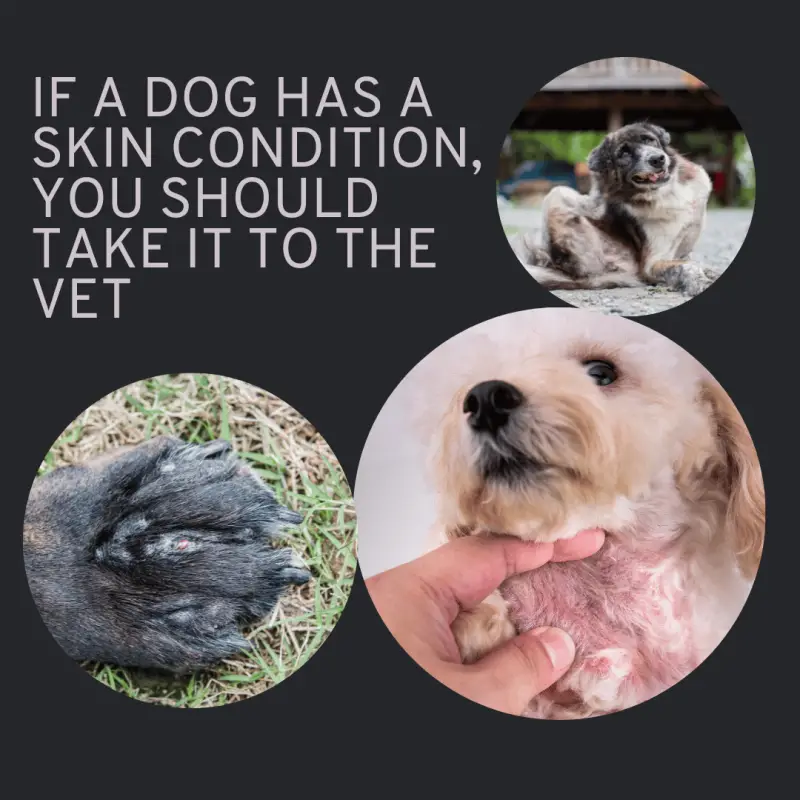Ensuring the safety of products for your canine companion is crucial for responsible pet owners who genuinely care about their furry friend’s wellbeing. Let’s delve into whether E45 Cream is suitable for our beloved dogs.
Using E45 cream on dogs is not recommended as it is specifically formulated for moisturizing human skin and possesses no healing properties that could benefit a dog’s skin. Its purpose is solely to enhance the softness of human skin.
E45 Cream: A Trusted Moisturizer for 60 Years
E45 Cream has been a popular moisturizer for 60 years. Initially developed for hospitals, it quickly became available in stores and remains a go-to choice for many people today. It works well for my eczema, but it’s important to remember that it should not be used on dogs.
The company behind E45 Cream is called Reckitt Benckiser Group. They have been around for over 200 years and are known for creating reliable products in the healthcare and hygiene sectors.
E45 Cream is trusted by many because it effectively nourishes and moisturizes the skin. However, it’s essential to only use products specifically for animals when caring for your pets, including dogs.
E45 Cream is a long-standing and popular moisturiser that has been trusted for decades. While it works well for certain skin conditions, it should not be used on dogs.

Safety of E45 Cream Ingredients for Dogs
The three main active ingredients in E45 cream are White Soft Paraffin, Light Liquid Paraffin, and Anhydrous Lanolin. While these ingredients are generally considered safe for humans, using E45 cream or any other human skincare product on dogs without consulting a veterinarian is not recommended. Dogs have different skin pH levels and can react differently to ingredients that might be safe for humans. It’s best to use products specifically formulated for dogs to ensure their safety and well-being.
- Anhydrous Lanolin
- White Soft Paraffin
- Light Liquid Paraffin
To help you understand why E34 Cream isn’t the best choice for a dog’s skin, you must learn the differences between human skin and a dog’s skin.
Differences Between Human Skin And Dog Skin
- Human skin is much thicker than dog skin, making it more sensitive to creams. Humans have ten to fifteen deep skin cells, while dogs have only three to five cells deep.
- Dogs shed their skin every two to three weeks, and humans are every two to four weeks.
Dogs skin has three main layers:
- Epidermis
- Dermis
- Hypodermis
The epidermis is the outer part of the dog’s skin, which is the main barrier, much thinner than a human’s skin. Also, the thickness between dogs varies between age and breed. The poodle is known to have the most delicate, and labradors are known to have the most thickness.
The dermis is located below the epidermis, and this part contains the connective tissue for a dog’s fur. It also has the job of nourishing and supplying the blood vessels to the epidermis. The dermis can vary in thickness depending on the dog’s breed and age. However, the dermis is a lot thinner than humans regardless.
The hypodermis, also known as the subcutaneous tissue, is the layer of skin found beneath the top layers. It comprises fat cells that store fat and provide insulation for the body. The amount of fat in the subcutaneous tissue can vary depending on the breed and individual dog. The hypodermis also contains blood vessels, nerves, and connective tissues that support the skin. Overall, the hypodermis acts as a protective layer, cushioning the skin and helping to maintain body temperature.
Comparison of Human Skin and Dog Skin
| Human Skin | Dog Skin | |
|---|---|---|
| Structure | Consists of three layers: epidermis, dermis, and hypodermis | Also has three layers: epidermis, dermis, and subcutis (fat layer) |
| Thickness | Relatively thin | Thicker |
| Hair | Sparse hair coverage | Dense coat of fur |
| Sweat Glands | Numerous sweat glands throughout the body | Limited number of sweat glands, primarily on the paws |
| Sebaceous Glands | Distributed throughout the skin | Concentrated on specific areas, like the nose and paw pads |
| Sensitivity | More sensitive to touch and external stimuli | Less sensitive to touch, but highly responsive to scent |
| Sun Protection | Less resistant to ultraviolet (UV) radiation | More resistant to UV radiation |
| Healing | Slower healing process | Faster healing process |
| Allergies | Prone to allergies and skin reactions | Can also develop allergies and skin issues |
| Bacterial Defense | Fewer antibacterial substances | Rich in natural antimicrobial peptides |
| Dermatological Disorders | Different types of disorders, such as acne and psoriasis | Particular disorders like atopic dermatitis and hot spots |
Now we know the differences in the skins between dogs and humans, you now understand that moisturising creams made for humans are not such a good idea to use on our dogs. Creams for dogs will be made for dogs with the correct non-toxic ingredients.
Exploring Alternatives: Care for Your Dog’s Skin Without E45
If you’ve been considering using E45 for your dog’s dry or flaky skin, there are alternative options specifically designed for a dog’s skin that you should consider instead. However, it’s essential to consult your vet before using any of these creams, as it’s essential to rule out any severe skin problems beforehand.
Help With Dry/Itchy Skin
Serious Dermatological Issues in Dogs

Consult a veterinary professional before applying any cream to your dog. This is because certain severe conditions can potentially deteriorate through unsuitable treatments.
Dermatitis
Dogs experiencing dermatitis often suffer considerable discomfort. The condition generally presents as a red, inflamed area of the skin, which may discharge fluid and emit an unpleasant odour.
Yeast Infection
A distinctive sour smell characterises this issue and can result in a dog’s fur appearing and feeling oily.
Ringworm
Ringworm, a fungal infection, typically manifests as round, raised red patches on the skin.
Hypothyroidism
Hypothyroidism in dogs tends to result in bald spots or thinning fur, a dull coat, and flaky skin. Dogs suffering from hypothyroidism may also display rapid weight gain symptoms and exhibit lethargy behaviour.
Cancer
Just as in humans, dogs are also susceptible to skin cancer. Should you notice any unusual growths, scabs, warts, or changes in skin tone, such as hues of black, brown, red or pink, it is crucial that you promptly seek veterinary advice.
Remember: Dealing with dry or flaky skin, lumps, or red sores on your dog can be challenging. However, these issues could indicate more severe health problems, so you must consult a veterinarian before attempting home remedies. Please be mindful and refrain from using E45 cream on your dog.


